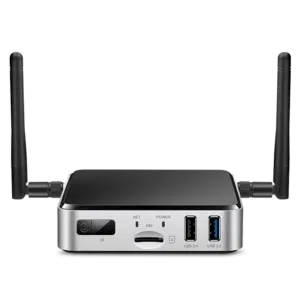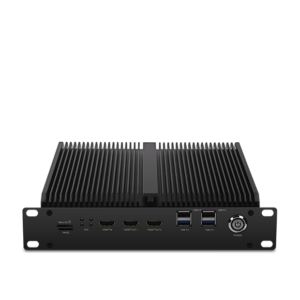The Influence of Running AI on Side Devices
The Influence of Running AI on Side Devices
Blog Article
The Influence of Running AI on Side Devices
Real-World Purposes of AI on Edge Products
Artificial intelligence (AI) is no more limited to the region of big, centralized information centers. Thanks to developments in engineering, edge products now play a key position in deploying AI straight where data is generated. But what does AI on side devices suggest, and why is it making such a excitement? Here, we'll explore how embedded edge ai runs in real life through edge devices and reveal its wide variety of practical applications.

What is AI on Edge Devices?
AI on side products refers to deploying synthetic intelligence algorithms on products like smartphones, cameras, drones, or IoT sensors. They do not require usage of centralized machines for running information; alternatively, they conduct analysis and decisions domestically, making the method quicker, better, and frequently more secure.
The "edge" here simply describes processing done close to or at the foundation of knowledge generation, in place of relying on the cloud. This change is driven by the demands for real-time knowledge handling and the requirement to reduce latency, enhance solitude, and lower bandwidth usage.
Crucial Real-World Programs of Edge AI
1. Smart Detective
AI-powered cameras equipped with skin recognition, motion detection, and anomaly detection are transforming monitoring systems. Edge products in this domain can analyze movie revenues in real-time to recognize suspicious activities, eliminate fake sensors, and increase public safety. For example, AI algorithms may detect uncommon movements and attentive authorities immediately without the necessity to send movie data to a central machine for analysis.
2. Healthcare Checking
Wearable units and lightweight medical equipment are leveraging m.2 ai accelerator for controlling wellness data more efficiently. Edge-based AI in units like health trackers and smartwatches displays users' vitals, such as heartbeat, air levels, or blood force, in real-time. These techniques analyze data domestically and provide immediate feedback, paving the way for faster intervention all through emergencies.
Beyond wearables, advanced medical imaging devices equipped with on-device AI can identify signs of disorders like cancer, allowing earlier diagnoses even in rural areas without web connectivity.
3. Autonomous Cars
Self-driving vehicles are among the absolute most well-known types of edge AI in action. With sensors, cameras, and LiDAR methods providing as data places, AI computations take place onboard these vehicles to create split-second decisions. From finding pedestrians and limitations to moving town roads, edge AI assures that the vehicle runs easily and efficiently. The real-time control capability of edge products eliminates the dependence on high-latency cloud systems, ensuring security in life-critical scenarios.
4. Retail Analytics
Edge devices in retail conditions are supporting firms analyze client behavior. Wise cabinets and AI-equipped cameras may identify client tastes, monitor supply, and also customize in-store activities in true time. The data created from these units assists retailers produce informed choices, increase client satisfaction, and enhance inventory management.

5. Industrial IoT
Factories and professional flowers are adopting side AI to revolutionize their checking and automation processes. AI-powered detectors on machinery discover possible errors a long time before they cause expensive failures. Predictive maintenance pushed by side AI decreases downtime, promotes productivity, and assures security on the production floor.
6. Individualized Experiences in Client Units
Your smartphone is a leading exemplory instance of how edge AI personalizes person experiences. Features such as for instance voice assistants, adaptive camera controls, and on-device language interpretation use real-time AI to respond to person needs without giving painful and sensitive knowledge to external servers. This fosters both convenience and privacy for the finish user.
The Rising Affect of Edge AI
The adoption of AI on side devices remains to rise, driven by industries' raising need for low-latency, real-time processing, and higher knowledge privacy. Its programs are reshaping industries ranging from healthcare and automotive to public safety and retail. By getting AI's power closer to wherever knowledge is developed, edge devices are not just increasing performance but also demonstrating the limitless possible of creativity in the current linked world. Report this page